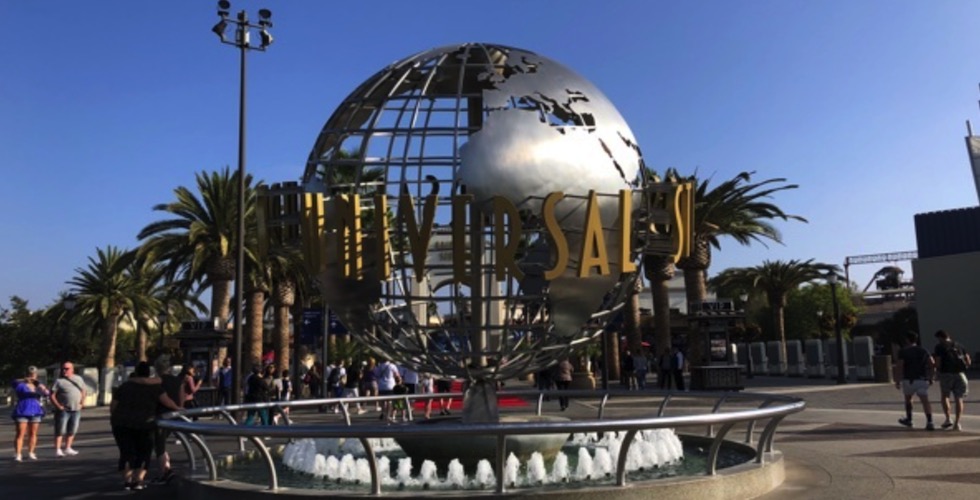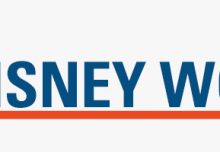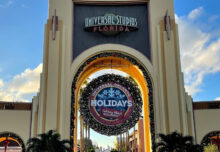Universal Studios did not set out to challenge The Walt Disney Company in the theme park business. The men who ran the Music Corporation of America (MCA) were quite happy with the industrial tour they created in 1964 at Universal City. The Universal Studio Tour took visitors behind the scenes of the largest and busiest back lot in Hollywood to show how motion pictures and television programs were manufactured. . . .

In 1979 MCA bought land in Orlando 10 miles north of Walt Disney World and later announced that it was going to build a motion picture and television production studio. The new studio would have also featured a tour just like the one in California. Lew Wasserman, MCA’s legendary chief executive, knew better than to compete with Disney and its dominance with fantasy landscapes. He enjoyed the fact that the two Southern California tourist attractions complemented each other, and he was making money with minimal investment.

Everything changed just a few years later. In 1984 Disney hired Michael Eisner as the new chief executive officer and Frank Wells as president. Before Disney, Eisner had been president of Paramount Pictures Corp., and Wells had been a well-respected executive at Warner Bros. Within two weeks of the Disney leadership change, MCA president and Wasserman’s protégé, Sidney Sheinberg, sent a letter to his old friends proposing a meeting to discuss ideas that would be in the mutual interest of both companies.

It made sense to turn to Michael Eisner. While he was at Paramount, Sheinberg had shown him MCA’s Florida plans with the hopes of forming a partnership. Eisner liked what he saw. When nothing came of the talks, Eisner blamed the impasse on powers higher up the corporate food chain at Paramount’s parent company, Gulf and Western. Now that Eisner was in charge of Disney, Sheinberg thought Eisner would be excited to become MCA’s partner in Florida.
During the call, a confident Sheinberg suggested to Eisner, “Let’s get together on a studio tour in Orlando. We tried with your predecessors, but they were unresponsive. We think we can help you.” [1] Much to the surprise of the MCA executives, Eisner told his old friend, “We’re already working on something of our own.”[2] . . .
Then, on February 7, 1985, Michael Eisner made headlines at his first meeting with Walt Disney Productions shareholders. Before a packed house at the Anaheim Convention Center, he announced that Disney would soon start construction of a third theme park at Walt Disney World. The heart of Disney’s park would be a real working production studio with two soundstages and a working animation studio. . . .

The men at MCA were livid. After reviewing Disney’s plans, Sheinberg claimed that Eisner stole the idea he heard at the 1981 pitch at Paramount. For his part, Eisner claimed the presentation occurred “many, many years” ago and added “when I arrived at [Disney], the studio tour was already on the drawing boards and had been for many years.” [3] . . .
A bitter Sheinberg replied, “You’re going to have to work awfully hard to convince me that [Eisner] didn’t know about [MCA’s plans]. That’s ridiculous. . . . Disney announced it would do the theme park and would have you believe it’s been in the works since 1926—if you believe in mice, you probably believe in the Easter Bunny also.” [4] At MCA, you do not get mad. You get even. This is how the greatest rivalry in the theme park industry began.
For all there is to see and do at Universal Orlando, check out The Unofficial Guide to Universal Orlando. For an in-depth look at American theme parks’ greatest rivalry check out Universal versus Disney: The Unofficial Guide to American Theme Park’s Greatest Rivalry by Sam Gennawey.
If you enjoyed this post, please subscribe to our YouTube channel and sign up for our newsletter here. Be sure to follow us on Twitter, Facebook, Instagram, and YouTube.
- Ellen Farly, “Behind the MCA-Disney War in Fla.,” The Los Angeles Times, 23 April 1989.
- Michael D. Eisner with Tony Schwartz, Work in Progress: Risking Failure, Surviving Success (New York:Hyperion, 1998).
- Kathryn Harris, “Florida Fund may Invest in MCA Park,” The Los Angeles Times, 20 May 1985.
- Farly, “Behind the MCA-Disney War in Fla.”
2 Comments
-
I thought the article was great until I read the end, which I think should’ve been the middle. I’d like much more detail in that, “Closer Look”. What happened next? Is Universal trying to compete on Disney’s scale? Let’s compare Hollywood Studios to Universal Studios. Have any Imagineers left Disney to work for Universal Creative? Let’s dig in a bit more to expand on all of this.
-
For an in-depth look at American theme parks’ greatest rivalry check out Universal versus Disney: The Unofficial Guide to American Theme Park’s Greatest Rivalry by Sam Gennawey.
-





